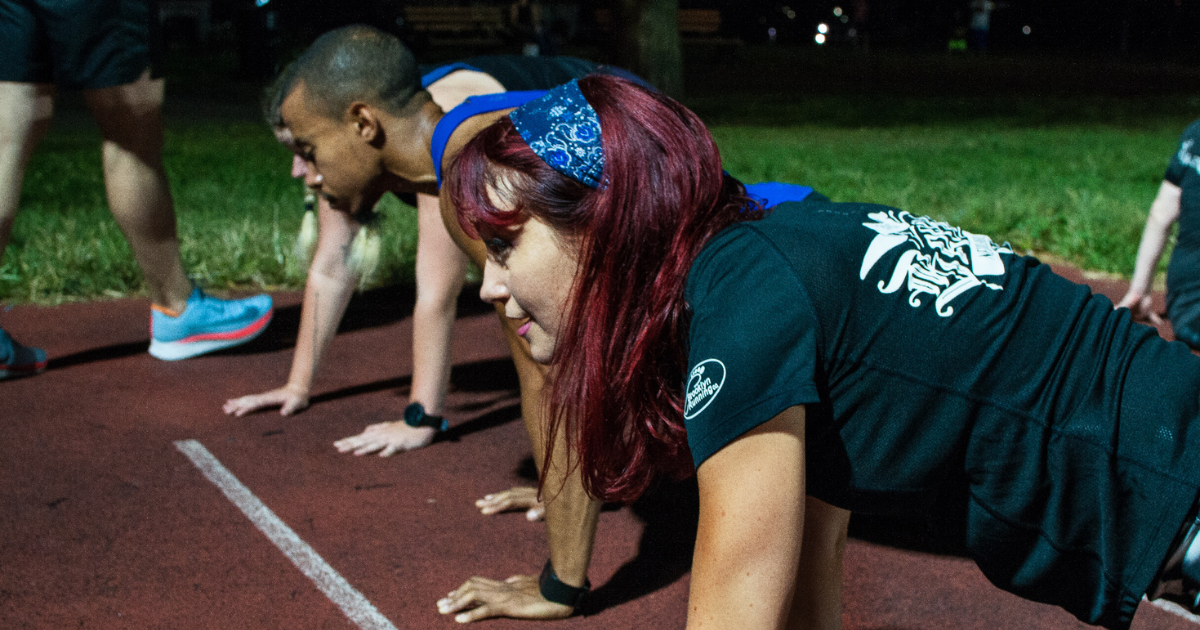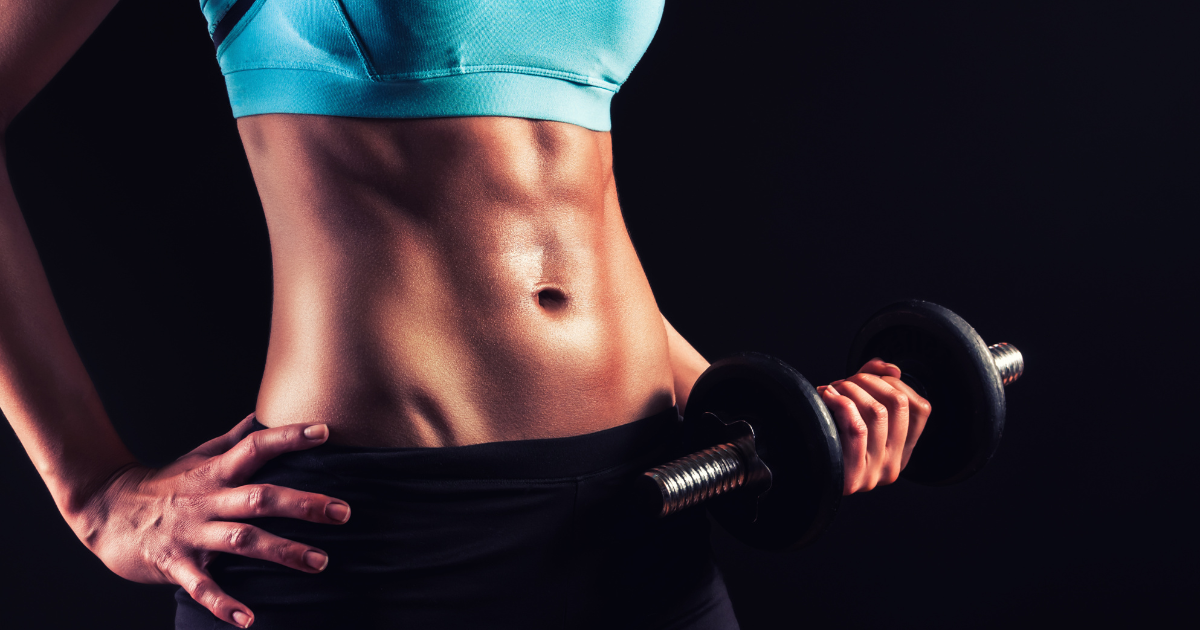5 Best Core Workouts for Runners
High planks. Photos by Marques Jackson Photography
By Marnie Kunz, NASM-certified trainer, USATF- RRCA-certified run coach
These 5 best core workouts for runners can help you become a stronger, faster runner and improve your running posture. Whether you’re a beginner or a longtime runner, these core workouts are easy to add to your routine. And unlike some strength training exercises, you don’t need any equipment for these workouts. In fact, these core workouts for runners are easy to do anywhere, so you can do them in your hotel room when traveling, outside at a park or track, or in your home or gym.
As a trainer and running coach, I have learned a lot about the benefits of strength training for runners. These are my top picks for the best core workout for runners. If you need a personalized training program to help you strengthen your core and become a better athlete, check out our Runstreet Training Center for a customized program designed just for you.
Benefits of Core Workouts for Runners
I know core work is not a favorite of many runners, but it doesn’t take a long or hard workout to improve your core strength, and there are so many benefits. And all you need is a gykm or yoga mat to get started. Here are some of the rewards of doing regular core workouts for runners:
Reduces your risk of running injuries. Studies show that having weak core muscles is one of the most common causes of running injuries. Strong core muscles help stabilize your torso when you run, and support your upper body and pelvis.
Improves your running form. Having a strong core helps you to stay balanced and stable when you run. Strong core muscles help transfer force through your body to prevent tightness and pain in your back, hips, quads, knees, and neck. Your core muscles also work to help you breathe properly while running.
Makes you a faster runner. A strong core helps you run more efficiently, which will improve your performance. Runners tend to especially get poor form when they’re fatigued - such as at the end of a race or during a speed workout. Strong core muscles will help you maintain your form and be able to run more efficiently.
Decreases lower back pain. If you suffer from back pain, strengthening your core can help reduce your back pain. Weak core muscles can place more pressure on your spinal bones and discs, so strengthening your core may help relieve this pressure.
How Often to Do Core Workouts for Runners
You don’t need to do core exercises every day, but at least twice a week is a good idea. Research shows that doing 2 to 4 core workouts a week is the most beneficial for runners. You don’t have to do long, intense core workouts but instead can do 10- to 20-minute sessions to get in all the core work you need to be a stronger runner.
5 Best Core Exercises for Runners
The core muscles are more than abs - they also include the trunk and hip muscles that surround your spine and deep abs, which are not visible to the naked eye. These core workouts for runners will help strengthen the most important muscles in your core for running. So you may enjoy more defined abs from doing these exercises but most importantly,
Dead Bugs
Benefits: A beginner-friendly core exercise that targets your deep abs and helps with stabilization and the rotational force of running.
How To Do It: Lie on your back with your knees bent at a 90-degree angle and your arms straight up. Slowly lower your right arm and left leg toward the ground, exhaling and straightening your leg as you lower it. When your arm and leg are 1-2 inches above the ground, slowly raise them back up. Repeat with your left arm and right leg.
Count: Do 10 on each side. Repeat to do 2 to 3 sets of the exercise.
Planks
Benefits: Planks are one of the best core workouts for runners, targeting your rectus abdominis (abs), obliques, transverse abdominis (deep abs), erector spinae (which help rotate the spine), and lower back. Planks will help stabilize you as you run and improve your running form and efficiency. They also have many variations to suit all fitness levels, and they place less pressure on the spine than traditional crunches.
How To Do: To do a forearm plank, place your hands below your shoulders with elbows bent, resting on your forearms and toes with your torso parallel to the ground. To do a high plank, keep your arms straight and begin from a high push-up position with your elbows in line with your wrists. The high plank puts more strain on your wrists so if that bothers you, do a forearm plank. Keep your core muscles tight and your head and neck neutral while in plank position. Imagine a straight line going from your head to your feet.
Count: Start with 20-second planks and work your way up to doing 30 seconds and eventually up to 1-minute planks. Maintain good posture with your body in a straight line. Do 2 to 3 sets.
See our article on How to Do Planks for more tips and variations.
Side Planks
Benefits: Side planks help strengthen your obliques and your gluteus medius and gluteus maximus, which help you stabilize your hips when running.
How To Do: Start by lying on your side with your forearm on the ground, right elbow directly under your shoulder. Engage your core muscles, lift your hips off the ground, and stack your feet on top of each other. Your body should form a straight line from your head to your feet, with your forearm and feet as the only points of contact with the ground and your body facing forward. Hold. Repeat on the left side, resting your weight in your left elbow and stacked feet.
Modification: If you need to modify side planks, allow your right knee and right elbow to rest on the ground. Repeat on the left side.
Count: Do two sets of 15-second planks on each side and work your way up to doing 2 to 3 sets of 30- or 45-second planks to complete your core routine.
Single-leg glute bridge.
Bridges
Benefits: Bridges stretch your hip flexors, which are often tight in runners, as well as strengthen your rectus abdominis (or abs), obliques, and glutes.
How To Do: Lie on your back with your knees bent and feet resting on the floor and arms by your sides. Engage your core and glutes and lift your body off the ground until your body forms a straight line from your knees to your shoulders. The top of your upper back will be connected to the ground. Squeeze your glutes and hold for 2-3 seconds. Lower your body back to the floor.
Advanced: For more intensity, once you master glute bridges you can do single-leg glute bridges. Begin from the same starting position and then raise one leg straight up toward the ceiling. Do the bridges with one leg planted on the ground and one leg raised in the air. Repeat on the other side.
Count: Do 2 sets of 10 reps and work up to doing 3 sets of 10.
Flutter kicks.
Flutter Kicks
Benefits: Runners have notoriously tight and weak hips, and flutter kicks can help activate your hip-flexor muscles, as well as strengthen your lower-back muscles and lower abdominal muscles.
How To Do: Lie on your back with your arms by your sides and your legs extended straight out in front of you. Engage your core muscles and press your lower back into the ground. Lift your feet a few inches off the ground, keeping your legs straight. Alternate between lifting your left foot and right foot in a small kicking motion. Keep the movement small and controlled.
Count: Start with 2 sets of flutter kicks for 30 seconds and work up to doing 2 to 3 sets of 1-minute flutter kicks.
I hope you find these 5 core workouts for runners helpful in your fitness training. As a trainer and running coach, I know how important strength training can be in preventing injuries and improving your mobility and running form. I also know core workouts are not a favorite of many runners, so hopefully learning about the benefits of core exercises helps you stay motivated. You don’t need to do a crazy intense core training program but just two short core workouts a week can go a long way toward improving your running and athletic performance.
What are your favorite core workouts? Follow and tag @Runstreet on Instagram to get cheered on in your workouts. Happy running to you, and stay strong!
Related Posts: How to Balance Running and Weightlifting, Strength Training for Runners Guide
Marnie Kunz is a NASM-certified personal trainer and USATF- and RRCA-certified running coach based in Brooklyn, NY. Marnie likes helping people get and stay active to enjoy a better quality of life. When she’s not doing fitness things, Marnie enjoys exploring with her dog, a mischievous rescue Akita.






